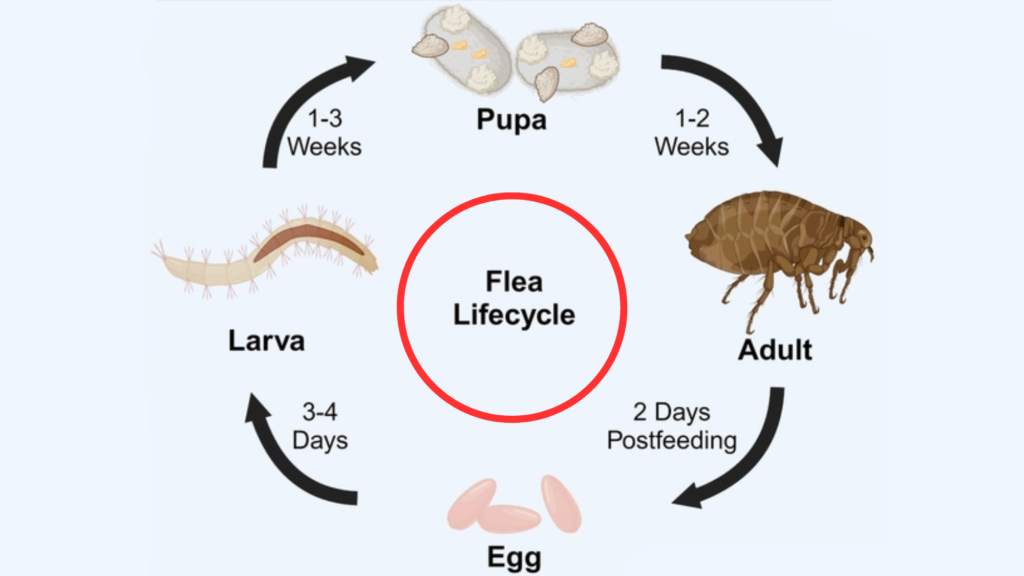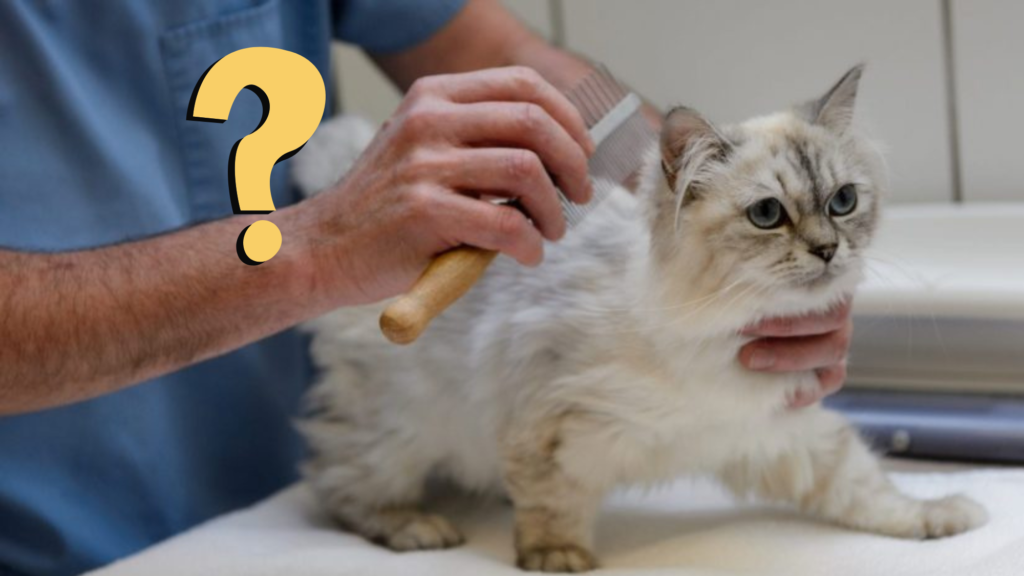| Summary: Yes, dog flea treatments can kill cat fleas, but not all are safe for cats. Some contain permethrin, which is toxic to cats. Always check labels and use a vet-approved flea treatment for each pet. Never apply dog-specific flea products to cats, as they can cause severe poisoning or death. |
When it comes to keeping our pets free from fleas, many owners wonder if the flea treatment they use for their dog will also kill cat fleas. So, will dog flea treatment kill cat fleas? This question is common because the most prevalent flea species—Ctenocephalides felis, the cat flea—infests both cats and dogs. Many dog flea treatments can kill cat fleas, but they may contain ingredients toxic to cats. GPS dog collars help monitor flea-prone outdoor areas.
I’ll explore how dog flea treatments work, whether they are effective against cat fleas, and what safety issues and practical steps you should consider when managing flea infestations.
For expert tips on how to fit a collar on a Belgian Shepherd, this guide offers simple steps to ensure your dog’s collar fits securely and comfortably.
Blog Highlights
ToggleUnderstanding Flea Biology and Species
Fleas are small, wingless insects that survive by feeding on the blood of mammals and birds. The cat flea, Ctenocephalides felis, is the most common flea species found on both cats and dogs. Despite its name, it does not exclusively infest cats. This flea can be found on dogs, wildlife, and even in the home environment. Always check labels—some dog flea treatments contain permethrin, which is deadly to cats. Pet tech products like UV flea detectors can assist in early detection.

Fleas undergo a complete life cycle consisting of four stages: egg, larva, pupa, and adult. Adult fleas live on the host’s body, where they feed on blood and reproduce. The flea eggs fall off the host and develop in the environment, eventually emerging as adults. Because of this life cycle, an effective flea control program must target both the adult fleas on your pet and those in the environment. If using a dog flea treatment in a multi-pet household, ensure it’s safe for cats as well. Electronic dog collars can prevent scratching-related injuries from flea infestations.
Understanding that cat fleas can infest both cats and dogs is important when considering flea treatment. Since these fleas are the same species regardless of which animal they are found on, the active ingredients in many flea treatments can work on them no matter the host. However, formulations are tailored to the physiology of the intended host.
Will Dog Flea Treatment Kill Cat Fleas: How Dog Flea Treatments Work
Dog flea treatments are formulated specifically to be safe and effective for use on dogs. These products often come in various forms, such as topical spot-on treatments, oral medications, shampoos, or collars. Their purpose is to kill adult fleas on contact or shortly after they begin feeding. Some products also have a residual effect, which means they continue to kill fleas for several weeks after application.
Common Active Ingredients
Many dog flea treatments include active ingredients like:
- Fipronil: Disrupts the flea’s nervous system, killing them upon contact.
- Imidacloprid: A neonicotinoid insecticide that interferes with flea nerve signals.
- Pyrethroids: Synthetic chemicals that affect the nervous system of insects.
- Spinosad: An oral medication that causes rapid flea knockdown.
- Selamectin: Often used in spot-on formulations to repel and kill fleas and ticks.
These chemicals are chosen for their ability to target flea physiology. They work by binding to receptors in the flea’s nervous system, leading to paralysis and death. Because the cat flea is sensitive to these compounds, dog flea treatments typically will kill cat fleas present on a treated dog. To safely eliminate cat fleas, use a vet-approved flea treatment designed specifically for felines. Dog training equipment can help with flea-preventive grooming routines.
The Efficacy of Dog Flea Treatment Against Cat Fleas
Since the predominant flea species affecting pets is the cat flea, dog flea treatments are generally designed to kill them regardless of whether they originally came from a cat or a dog. When a dog is treated with a flea product, the active ingredients spread across the dog’s skin and hair. As fleas jump onto the dog and begin to feed, they absorb the insecticide and are killed.
How It Works in Practice
- Immediate Kill Effect: Many flea treatments have a quick knockdown effect, meaning fleas are paralyzed and die within hours of contact. This rapid action helps reduce the overall flea population on your dog.
- Residual Protection: A good flea treatment will continue to protect your dog for weeks, ensuring that any flea that jumps onto the animal encounters the insecticide. This long-lasting effect is crucial in preventing re-infestation from environmental sources.
- Targeting the Flea Life Cycle: While most treatments focus on killing adult fleas, some also have effects on flea eggs or larvae, helping to break the flea life cycle and reduce the chance of future outbreaks.
Because the cat flea is the main target of these treatments, using a dog flea treatment on a dog effectively kills any cat fleas that try to feed on them. However, the situation changes when considering cross-species use.
For detailed guidance on selecting the correct collar size for a Belgian Shepherd, this article provides essential tips to ensure your dog’s comfort and safety.
Safety Considerations for Cats and Dogs
One of the most critical factors in flea control is ensuring that the treatment is safe for the species it is being applied to. Dog flea treatments are formulated based on the physiology and metabolism of dogs. Cats, on the other hand, have very different sensitivities and metabolic processes.

Why You Should Never Use Dog Flea Treatment on Cats
- Species-Specific Formulations: Many of the chemicals used in dog flea treatments are safe for dogs when used as directed, but the same chemicals can be toxic to cats. For example, certain pyrethroids, which are common in dog treatments, can cause severe neurological problems in cats.
- Differences in Skin and Absorption: Cats have thinner skin and may absorb chemicals at a higher rate than dogs. This difference can lead to overdosing and adverse reactions if a dog product is applied to a cat.
- Metabolic Differences: Cats process medications and chemicals differently. An insecticide safe for dogs might not be metabolized in the same way by a cat, leading to harmful side effects.
Accidental Ingestion and Cross-Contact
If a dog treated with a flea product comes into contact with a cat, there is a possibility that some of the chemical residue might transfer to the cat. While a small amount might not necessarily harm the cat, it is not recommended to rely on indirect exposure for flea control. Always use products specifically designed for each species to ensure safety.
Observations and Expert Insights
Many pet owners have experienced situations where their dog was treated with a flea product and later noticed a significant decrease in flea numbers—even if those fleas were originally cat fleas. In these cases, the treatment worked as intended on the dog. However, experts advise that flea treatments should always be used according to the label directions for each species.

Key Observations
- Effective Control on Treated Dogs: When applied correctly, dog flea treatments have been shown to kill cat fleas on the treated animal. The active ingredients do not distinguish between a flea that jumped from a cat or one that has been on the dog previously—they simply target the insect’s nervous system.
- No Substitute for Species-Specific Products: While dog flea treatments are effective on dogs, they are not a substitute for flea products designed for cats. Using the wrong product on the wrong species can lead to serious health risks.
- Environmental Impact: Flea treatments on pets help reduce the number of adult fleas in the environment. However, since fleas have a life cycle that includes eggs and larvae in the environment, it is also necessary to treat the living area to fully control infestations.
Veterinarians emphasize that while the active ingredients in dog flea treatments are generally effective against cat fleas on dogs, the products should never be interchanged between species. It is always best to use a product that is designed for the specific animal you are treating.
Discover the perfect collar size for an Anatolian Shepherd Dog to ensure comfort and security for your furry friend.
Practical Recommendations for Flea Control
For pet owners looking to manage flea infestations safely and effectively, here are some practical recommendations:
- Use Species-Specific Products: Always select flea treatments that are formulated for the specific species you are treating. For dogs, choose a product that is labeled for canine use. For cats, opt for a product that is safe for feline use.
- Follow the Label Directions: Whether using a topical spot-on, an oral medication, or a flea collar, read and follow the manufacturer’s instructions carefully. Overdosing or improper application can reduce efficacy and increase the risk of side effects.
- Treat the Environment: In addition to treating your pet, address the flea problem in your home. Regularly vacuum carpets, wash pet bedding, and consider using environmental flea control products to break the flea life cycle.
- Regular Monitoring: Check your pet regularly for signs of fleas. Early detection of an infestation can make treatment easier and prevent a full-blown outbreak.
- Consult Your Veterinarian: If you are unsure which flea treatment is best for your pet, or if your pet has pre-existing health conditions, consult your veterinarian. They can recommend the most appropriate and safe product based on your pet’s specific needs.
- Integrated Flea Management: Consider an integrated approach to flea control that combines regular treatment with environmental management. This strategy reduces the risk of reinfestation and helps keep your pet comfortable and healthy.
By following these recommendations, you can create a comprehensive flea control plan that minimizes risks and maximizes effectiveness.
Addressing Common Concerns
Will the Treatment Kill Fleas That Come from Cats?
Yes, if your dog is treated with a proper flea product, it will kill any cat fleas that infest your dog. The active ingredients in dog flea treatments are effective against the cat flea species. This means that if a flea that originated on a cat jumps onto your treated dog, it will be exposed to the insecticide and should be killed shortly afterward.

Is It Safe for a Dog to Be in an Environment With Both Dogs and Cats?
In a household where both dogs and cats are present, it is common for flea treatments to be used on both animals. However, it is crucial that each species is treated with products specifically designed for them. Dog flea treatments are safe for dogs, and cat flea treatments are safe for cats when used as directed. Keeping the treatments separate and ensuring that the chemicals do not cross over is the best way to maintain a healthy environment for both pets.

Can I Rely Solely on Flea Treatments?
Flea treatments are an essential part of flea control, but they are most effective when combined with good environmental hygiene. Regular cleaning, vacuuming, and washing of pet bedding play a significant role in controlling flea populations. An integrated approach to flea management is key to long-term success.
Learn more about the unique double-layered coat of an Anatolian Shepherd and how to care for it effectively.
Final Words
In summary, dog flea treatments are designed to kill fleas—regardless of whether those fleas originally came from a cat or a dog. The active ingredients in these products target the flea’s nervous system and are effective against the cat flea, which is the most common flea species found on both dogs and cats. If your dog is treated with a proper flea product, any cat fleas that land on your dog are likely to be killed.
Hope so, now you know the answer: will dog flea treatment kill cat fleas? For insights on whether Pomeranians should wear a collar, including considerations for safety and alternatives, check out this informative article.
However, it is critical to remember that dog flea treatments are formulated specifically for dogs. They should not be used on cats because of the differences in physiology and metabolism. While the active ingredients may kill fleas on a treated dog, using the wrong product on a cat can lead to serious health risks.
For pet owners, the key takeaway is to always use species-specific flea treatments and to follow an integrated approach to flea control that includes both pet and environmental management. By doing so, you can ensure that your pet remains healthy and flea-free while minimizing the risk of exposure to chemicals that are not suited for their species.





